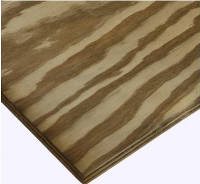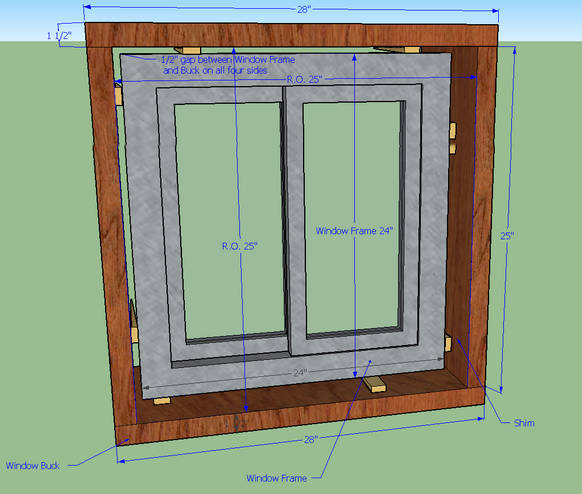
Dome-home Window and Door Framing
This page is about window and door framing in earthbag construction dome homes. It is meant to be the most complete, comprehensive, and easy to follow guide available. Once we’ve finished this tutorial and open sourced all the details for the 3-dome cluster as part of our crowdfunding campaign, we’ll do the same for the complete Earthbag Village (Pod 1) and Duplicable City Center®, and then the other 6 villages.
This guide consists of the following sections:
PAGE UNDER CONSTRUCTION
- What is This
- Why Open Source This
- Related Pages and Getting Involved
- Tools and Materials
- Initial thoughts and considerations
- Constructing window/door bucks
- Constructing anchor/nailers
- Installing bucks
- Attaching anchor/nailer plates
- Header installation
- Attaching stucco netting
- Resources
- FAQ
NOTE: THIS PAGE IS NOT CONSIDERED BY US TO BE A COMPLETE AND USABLE TUTORIAL UNTIL
WE FINISH THE CROWDFUNDING CAMPAIGN AND ADD ALL THE VIDEOS AND EXPERIENCE FROM
THAT BUILD TO THIS PAGE – IN THE MEANTIME, WE WELCOME YOUR INPUT AND FEEDBACK
HERE ARE LINKS TO WHO WE ARE AS AN ORGANIZATION (click icons for complete pages)
VISIT THESE DETAILED PAGES FOR MORE ON THE COMPLETE VILLAGE PLANS (click icons)
WAYS TO CONTRIBUTE TO EVOLVING THIS SUSTAINABILITY COMPONENT WITH US
SUGGESTIONS | CONSULTING | MEMBERSHIP | OTHER OPTIONS
CLICK THESE ICONS TO JOIN US THROUGH SOCIAL MEDIA
WHAT IS THIS
This page is about window and door framing in earthbag construction dome homes. It is meant to be the most complete, comprehensive, and easy to follow guide available. One Community will be using the Earthbag Crowdfunding Campaign and construction of the Earthbag Village to make it even better.
WHY OPEN SOURCE
DOOR AND WINDOW OPENINGS
![]() This page will teach the dome-home window and door framing and installation specifics for both the aircrete and earthbag construction dome homes. Open sourcing these details will help us decide which building method is truly best for us to build what is currently planned as the Earthbag Construction Village.
This page will teach the dome-home window and door framing and installation specifics for both the aircrete and earthbag construction dome homes. Open sourcing these details will help us decide which building method is truly best for us to build what is currently planned as the Earthbag Construction Village.
DOOR AND WINDOW OPENINGS
TOOLS & MATERIALS
- Hammer
- Circular saw or handsaw
- Cordless drill
- 2′ Level
- Tape measure
- Handsaw
- Eye protection
- Respirator
- Eight foot stepladder
- Carpenter’s square
- Carpenter’s pencil
- Sawhorses
- T-50 stapler & staples
- Portable cement mixer
- Concrete shovel
- Pressure treated (PT) lumber (2 x 12’s)
- Pressure treated (PT) ⦝” plywood for nailer plates
- Plywood (¼”)
- ½” rebar
- Post pounder/driver or a sturdy mallet
- Steel wire rebar support (2″ individual rebar chairs)
- Portland cement
- 3″galvanized nails
- Pressure treated lumber (2 x 4’s)
- Shims
- 1-1/2 in. x 37-1/2 in. x 150 ft. 17-Gauge Self-Furring Stucco Netting
- 12 Gauge, 100ft steel galvanized wire
- Wire cutters for cutting 12 gauge baling wire
HERE ARE PICTURES AND DESCRIPTIONS TO HELP YOU
 | Hammer for securing staples, building nailers and door/window forms. | |
 | Circular saw for cutting 2 x 12’s for openings, frames, and nailers. | |
 | ½” 20-volt cordless drill/driver with lithium-ion battery. The 18-volt drills are soon to be phased out and replaced by the 20 volt. The 20-volt are faster, more compact, and more powerful. While the 18-volt model will complete the work, it may soon be impossible to replace the battery chargers, therefore it is advisable to purchase the 20-volt over the 18-volt. This drill is used for assembling the window and door bucks. A drill of this kind is used extensively in most any building project if you are using wood as any component of your project. Different brands and models are available. | |
 | Level to keep walls and frames level and plumb. | |
 | A tape measure will find continued use throughout any project. | |
 | Handsaw – optional wood cutting. | |
 | Eye protection and a respirator should always be worn when cutting wood, especially pressure treated wood. | |
 | Ladder used throughout our project. | |
 | Carpenter’s squares comes in many different variations, used to keep door/window frame sides perpendicular to each other and designating “cut” lines on lumber. | |
 | Carpenter’s pencil for marking cuts. | |
 | Sawhorses for cutting lumber and plywood, the plastic set on the left is durable and light while the homemade wooden version is less expensive but heavier. Sawhorses allow you to make cuts in a safe, upright, comfortable, standing position. Use link for DIY instructions “How to Make a Sawhorse” | |
 | T-50 stapler and staples used to secure chicken wire on the sides of door/window frame. | |
 | Cement mixer to prepare concrete for lintel. | |
 | Concrete shovel to transfer concrete from Mixer to the Lintel form. | |
 | 2 x 12 pressure treated lumber for door/window frames. | |
 | Severe Weather Pine Pressure Treated Plywood (Common: 5/8 x 4 x 8; Actual: 0.593-in x 48-in x 95.868-in) for Arch Frames and Nailer Plates. | |
| coming soon | This is ¼” plywood used for a different purpose in this photo, but as you can see it is flexible and with narrower strips it will work fine for the curved removable concrete header forms. An alternative is 3/16″ masonite. | |
 | ½” rebar for lintel reinforcements. | |
 | Post pounder/driver OR a sturdy mallet for pounding in rebar. | |
 | Bar chairs, to support rebar in place in lintel form. | |
 | Portland Cement for reinforced concrete lintel. | |
 | 16d galvanized common nail (3 ½”) used in 2 x 12’s in window/door frame construction. | |
 | Pressure treated 2 x 4’s used for nailers (and bracing”if no onsite poles are available). | |
 | Wooden shims for squaring up window and door bucks and frames. | |
 | 1-1/2 in. x 37-1/2 in. x 150 ft. 17-Gauge Self-Furring Stucco Netting. | |
 | 12 gauge baling wire for securing stucco netting. | |
 | Wire cutters for cutting 12 gauge baling wire. | |
INITIAL THOUGHTS AND CONSIDERATIONS
Our window and doorway openings are constructed with wooden forms, providing both a stable anchor point when tamping earthbags and lending structural support to the above walls. Headers (lintels) are the horizontal members placed over the openings to carry loads to the adjoining studs (in conventional stud framing). In earthbag construction two other methods are used, earthbag arches and concrete or steel headers. In our project we are using rebar-reinforced concrete headers above the door/window openings, sturdy enough to support the weight of the heavy earthbag wall material and the portion of the roof that is supported above the opening. The depth of a header is determined by the width of the opening (in our case about 12″) and vertical loads supported.Depending on dome diameter, additional buttresses are required with the aesthetically pleasing arch design. Concrete headers, minus the arch design, save internal space and do not require internal wall extensions (buttresses).Using pressure treated 2 x 4’s and plywood, we create nailing anchors that provide additional holding capability, keeping the bucks (frames) in place and allowing installation of other items you may wish to secure to the earthbag walls, such as cabinets, pictures, etc.
CONSTRUCTING WINDOW AND DOOR BUCKS
Construction of the window/door buck sizes is directly correlated to the size of the window/door frames. This component includes the following steps:
- Determine total quantity and location of openings
- Determine exact door and window sizes
- Determine rough openings
- Cut buck pieces
- Build bucks
- Wrap bucks with stucco netting
Determine first the quantity, sizes, and location of windows and doors. Selecting standard sizes will keep costs down because any custom orders will increase prices. Once received, measure the exact length and width of the window/door frames (callout size) as depicted below.
Pictured here is the window glass and frame. The outside to outside measurement of the window frame is known as the callout size. For windows, add 1″ to both lineal measurements of width and height (½” / side) to determine the rough opening dimensions (R.O.—the framed opening left in a wall to receive a window or door unit) (This allows a half-inch of play all around the window so when the window is installed it can be made level and plum with shimming.); for doors, add 2″ to the height and width measurements of the actual door size (1″ / side). For our 36′ x 80″ doors the R.O. is 38″ x 82″.When discussing door and window sizes, the first number indicates the width, followed by the length. For example, if you have a 24″ x 36″ window, you will build a window buck from 2 x 12’s that has an opening that is 25″ wide x 37″ high. (We are using 2 x 12’s because the width of our walls will be approximately 12″.) If your window size is 23.5″ X 35.5″, then your R.O. is 24.5″ x 36.5″. For this 24″ x 36″ example, a contractor or manufacturer will refer to this as a 2030 window (two-oh x three-oh [2’0″ wide X 3’0″ high]). Once the R.O. size is determined, be certain it is not confused with the callout size (the actual exterior side to side width and height dimensions of the window frame that encases the glass………
ACCOUNT FOR FLASHING DIMENSIONS or maybe just runoff by inserting a sloped edge tied into the netting—insert here after verificationWith the proper sizes accounted for, you can begin cutting the individual buck pieces sized to fit your window. It may be more efficient to mark and cut all the same sized pieces simultaneously, then laying out the four separate pieces in individual groups for future assembly. Knowing all the above, here are the exact lumber dimensions for a 28″ x 37″ window buck with a 24″ x 36″ (callout sized) window:
- Cut two 28″ 2 x 12’s for the top and bottom of the buck. 28″ = callout width size of 24″ + 1″ gap (½”/side) + 3″ for vertical stud thickness of 1 ½” / stud because the top and bottom horizontal pieces will extend to the outer edge of the both vertical pieces.
- Cut two/three 37″ 2 x 12’s for the two side portions of the buck and the third will serve as a temporary interior vertical brace in the center of the buck—nix this if using poles for bracing. 37″ = callout height size of 36″ + 1″ gap—½” at top and ½” at bottom)
 | Ours windows will be 24″ x 24″ (callout size) with buck dimensions of 28″ x 25″. | |
Though listed as a nominal size of 2″ x 12″, the actual size of a 2 x 12 is 1½” x 11¼”, after milling. Long ago milled lumber nominal dimensions reflected the actual dimensions. In more recent times, after the milling process the actual size for a 2 x 12 is as stated above. Here is a table providing today’s nominal and actual sizes of milled lumber using nominal 1″ and 2″ pieces. Throughout our references to lumber sizes, the rounded off numbers refer to the nominal size, while any numbers accompanied by a fraction are the actual size. Here is a table depicting nominal and actual sizes of 1″ and 2″ dimensional lumber:http://www.magers.org/handy/nom_vs_act_board.html Required for this are:
- Two 28″ 2 x 12’s for the top and bottom of the buck. 28″ = callout width size of 24″ + 1″ gap (½”/side) + 3″ for vertical stud thickness of 1 ½” / stud because the top and bottom horizontal pieces will extend to the outer edge of the both vertical pieces.


- Two/three 25″ 2 x 12’s for the two side portions of the buck and the third will serve as an interior vertical brace in the center of the buck—nix this if we use poles for bracing. 25″ = callout height size of 24″ + 1″ gap—½” at top and ½” at bottom).
The bucks are secured as described above, using 3 ½” galvanized screws. Set the two 2″ 28″ boards horizontally on edge on a flat surface with the two 25″ boards placed vertically on edge between them as shown in the below photo. Working on a flat surface will line up the edges of the board and allow you to drive 2-3 screws into all four corners.
INSERT OC PHOTO HERE
With that completed the bucks can now be wrapped in stucco netting. The purpose of this is to provide an adherent surface for the stucco of the exposed buck, as it will bind better to the netting than on raw wood. When the bucks are in place there is a visible outer edge on all four pieces of wood that make up the buck, on both the interior and exterior side. Before the buck installation, cut strips of stucco netting and staple to all the exposed edges that will receive stucco.
Here is a video detailing stucco netting and securing to bucks with staples:
VIDEO COMING OF: WRAPPING OF STUCCO NETTING AND SECURING TO BUCKS WITH STAPLES
SEE OUR HOW TO HELP AND/OR CROWDFUNDING CAMPAIGN PAGE TO HELP CREATE ALL THE TUTORIAL VIDEOS FASTER
The window buck is now ready for placement and can be set aside until needed. Our doors are standard sized doors (standard single entry exterior doors come in three common standard widths: 30, 32, and 36″. You can also find 28″, 34″, and 42″ doors for different applications. Code generally requires a primary exterior door to be 36″ wide and a secondary exterior door at 32″.
Check with your local codes for your area.
http://www.ehow.com/list_5934756_standard-sizes-exterior-doors.html
We will use 36″ wide x 80″ high doors. The R.O. for the doors will measure 38″ x 82″ (REMEMBER: THE R.O. IS ACTUALLY THE INTERIOR SIDE TO SIDE BUCK MEASUREMENT FOR BOTH THE WIDTH AND HEIGHT). The window/door manufacturers will generally provide an R.O. size. Following are the exact cutting dimensions for a 38″ x 82″ door buck with a 36″ x 80″ (callout sized) door:
- Cut two 41″ 2 x 12’s for the top and bottom……41″ = callout width size of 36″ + 2″ ( 1″ gap / side) + 3″ for vertical stud thickness (1 ½” / stud) because the top and bottom horizontal pieces will extend to the outer edge of both vertical pieces.
- Cut two/three 82″ 2 x 12’s for the two side portions of the buck and the third will serve as an interior brace in the center of the buck, nix this if using interior pole bracing…..82″ = callout height of 80″ + 2″ (1″ gap at top and bottom), which allows for a ¾” door frame and bottom threshold of ¾” thickness.
Use 3 ½” galvanized screws for securing, lay it out on a flat surface and wrap with stucco netting as described above for the window bucks. Use additional bracing as necessary as the earthbag courses go up, resulting from the horizontal pressure of the tamping of the bags. If you can use poles from your immediate environment, that will reduce lumber costs.
Here is a video detailing door and window framing above process (R.O. OF 38″ WIDE X 82″ HIGH X 22½” DEEP ASSEMBLY OF COMPLETED DOOR BUCK):
VIDEO COMING OF: DOOR AND WINDOW FRAMING FROM ABOVE PROCESS
SEE OUR HOW TO HELP AND/OR CROWDFUNDING CAMPAIGN PAGE TO HELP CREATE ALL THE TUTORIAL VIDEOS FASTER
HERE ARE SOME RELATED PHOTOS:
 |  |  |
With this completed, we will duplicate the process once again because we require a 22 ½” depth for the door frames and are using 2 x 12’s (actual width is 11 ¼” for each of the two 2 x 12 buck sets). The two individual same-sized door bucks are now ready for placement and can be set aside until needed.Upon installation, they are butted up against one another and secured in place with eight 18″ wide exterior anchor/nailers. For each vertical side of the door buck a nailer is attached, once the door buck is set in place, at the bottom, two in the middle, and one at the top (progressively added as the earthbag courses are set in place).
Here is a video detailing attachment of nailers for securing two individual door bucks:
VIDEO COMING OF: ATTACHMENT OF NAILERS FOR SECURING TWO INDIVIDUAL DOOR BUCKS
SEE OUR HOW TO HELP AND/OR CROWDFUNDING CAMPAIGN PAGE TO HELP CREATE ALL THE TUTORIAL VIDEOS FASTER
CONSTRUCTING ANCHORS AND NAILERS
The anchor/nailer plates are a single unit serving a dual purpose, anchoring a small section of pressure treated plywood used to secure the buck to the earthbags and attaching the buck to the nailer. The steps are as follows:
- Determine number of anchors for both door and window bucks
- Cut anchors
- Cut nailers
- Attach nailers and anchors together
- Set anchors in place
- Secure nailers to buck
Figure on using eight anchors on a door buck (4 / vertical side) and six anchors for most windows (3 / vertical side), though with small windows, two / side may suffice.Using your circular saw, cut an 8 ½” x 16″ piece of pressure treated plywood (anchor) (or sized at least 4″ longer than shortest bags at opening) and a 8 ½” long pressure treated 2 x 4 (nailer). With three 2″ galvanized screws and centered from outer edge to inner edge, attach the 8 ½” long 2 x 4 to one side of the 8½” wide piece of plywood, driving the screws from the plywood into the 2 x 4 nailer.Then drive in 3 ½” galvanized nails entirely through the plywood, about 4-6 from each side, placing the nailer with the 2 x 4 edge exposed toward the buck and tacking the anchor securely to the bags below. This is a drawing of a completed anchor/nailer.

The above is for the window bucks. For the door bucks the nailer/anchors will be 18″ wide by 16″ in length, the 2 x 4 nailer will be 18″ long and centered on the 22 ½” span, joining the two 11 ¼” deep door bucks forming a single 22 ½” deep door buck.
INSTALL SIDE BY SIDE PHOTO OF DOOR AND WINDOW NAILERS
INSTALLATION OF BUCKS
The buck installation will occur with the door bucks set on the gravel bag foundation and the window bucks set higher on the earthbags. These steps are required:
- Set bucks in place
- Check plumb and level
- Install temporary bracing
- Check plumb and level
- Build walls around bucks while inserting wires
Set the bucks in place and check for plumb and level. The internal bracing within the interior of the buck will resolve any excessive vertical or horizontal pressure; however, additional bracing may be required to prevent the bucks from moving forward or backward and to remain plumb. To accomplish this, nail two 2 x 4’s to each interior side of the buck protruding from both sides of the buck at an angle pointing down to the ground and brace them into the ground against a stake to prevent movement, as is depicted in the below video. If you have any poles available, say from a thicket of lodgepole, use those for bracing, as the thinning will not only open up and enhance the growth of the remaining plot but will simultaneously reduce lumber costs.
REPLACE BELOW PHOTO WITH OC PHOTO LATER

Here is a video detailing buck installation:
VIDEO COMING OF: INSTALLATION OF BUCKS
SEE OUR HOW TO HELP AND/OR CROWDFUNDING CAMPAIGN PAGE TO HELP CREATE ALL THE TUTORIAL VIDEOS FASTER
Bear in mind that the window and door bucks are going to have a lot of pressure (from tamping) against both vertical sides. Put supports inside the forms to keep them from warping and use braces that hold door and window frames in place during construction.

Locate bracing so workers can pass through doorway during construction. Corner bracing is another option for keeping the bucks square and is shown in the above and below photos. As you install the bracing, constantly monitor for plumb and level.

This photo shows the use of a metal anchor/nailer and how it binds the two individual bucks together, note the corner pole bracing.
ATTACHING ANCHOR/NAILER PLATES
To maintain positioning of the door and window bucks the anchor/nailer plates must be attached to the bucks and the earthbags, securing the bucks, anchor/nailers, and earthbags together. The following steps will accomplish this:
- Position anchor/nailer plates
- Secure plates to earthbags
- Check bucks for plumb and level
- Secure bucks to plates
- Continually monitor for plumb and level as earthbags courses go up
 | About 6″ above the earthbags butt the nailer edge against the exterior of the buck and slide the nailer down the edge until the 3 ½” galvanized nails of the anchor penetrate the earthbag. | |
 | With downward pressure and keeping the nailer against the exterior of the buck, place full downward pressure on the anchor until the nails are set to their full depth within the earthbag, while the others are pointing upward awaiting the next course of bags. | |
 | remove this photo or use it to demonstrate stucco netting on the buck????? | |
 | Close up view of metal anchor/nailers binding two bucks together. | |
Check plumb and level on the buck and then sink three 3 ½” galvanized screws evenly spaced from inside the 2 x 12 buck and connecting directly to the 2 x 4 nailer that sits adjacent to the buck. For window openings use two nailers on each side, for windows exceeding 24″ use three nailers. The nailers are attached as the earthbag courses go up, continually checking the bucks for plumb and level and adding bracing as necessary. For the door openings distribute the eight nailers, four per side, so there are two near the bottom, four in the center, and two near the top, all evenly spaced.


Another item commonly used for later attachment are tie wires (12 gauge baling wire), often used for attaching stucco netting to the exterior and interior walls further binding the two together. The stucco netting makes a great base structure to later plaster and build the inner and exterior walls as needed.For hanging shelving, pictures, and other assorted items, the nailer/anchors are inserted with the 2 x 4 nailer exposed to the interior of the dome, perpendicular to the positioning of the buck nailer/anchors. In this case the anchor will be sized smaller than 16″ so it is not exposed and remains under cover of the earthbags. Multiple anchors should be used for shelving, and single or double anchors for smaller and lighter items.
Here is a video of shelving and other item anchor/nailers:
VIDEO COMING OF: SHELVING AND OTHER ITEM ANCHOR/NAILERS
SEE OUR HOW TO HELP AND/OR CROWDFUNDING CAMPAIGN PAGE TO HELP CREATE ALL THE TUTORIAL VIDEOS FASTER
HEADER INSTALLATION
A concrete header (lintel) serves the same purpose as a traditional header in a stick-framed structure and is installed horizontally atop the rough opening; in the case of earthbag construction it provides support above the opening to carry the weight of the wall and redirect it to the earthbags on each side of the opening so there is no downward pressure on the buck.
The following steps are necessary:
- Build removable form
- Add and secure rebar on exterior and interior sides of form
- Pour concrete header
- Allow 2-days for setting of concrete
- Remove forms & continue adding earthbag courses
The forms are built from 3/16″ masonite, ¼” plywood, or any flexible sheathing that is bendable to follow the curves of the dome. We’ll use two pieces of ¼” plywood 8″ wide and extending about three feet further than both edges of the bucks, overlapping the bags. A 4′ X 8′ sheet of plywood can be cut in strips to whatever lengths are necessary. Half-inch rebar pins are pounded in with a post driver or a sturdy mallet on each side of the buck for stabilization, while others are positioned on the exterior of the form for shaping and used within the pour to increase the strength of the concrete. Hammer in rebar pegs to set the parameters for the width of the header, this is what will stabilize the form sides during the pour. Set the plywood on edge, following the contour of the earthbags, extending over the buck and overlapping the bags about three feet. Run two pieces of plywood, one for each side of the form. Then run a piece of baling wire through one side of the plywood and anchored, drawn across to the other side and tied off. This wire should be set between ⦜ -½ the distance from the bottom edge of the plywood—this will horizontally elevate the rebar, installing these about every three feet. Then bend the rebar accordingly to match the curve of the walls and secure to the wire keeping it at least three inches from the sides.
Here is a video of header form construction and rebar installation:
VIDEO COMING OF: HEADER FORM CONSTRUCTION AND REBAR INSTALLATION
SEE OUR HOW TO HELP AND/OR CROWDFUNDING CAMPAIGN PAGE TO HELP CREATE ALL THE TUTORIAL VIDEOS FASTER
Mix the concrete by hand in small batches, enough for simultaneously pouring other headers at the same course level. A concrete mixture ratio of 1 part cement, 3 parts sand, and 3 parts aggregate will produce a concrete mix of approximately 3000 psi. Mixing water with the cement, sand, and stone will form a paste that will bind the materials together until the mixture hardens. The amount of water used will depend on the climate and temperatures. Have an experienced person available who has mixed concrete so you can understand the necessary consistency required in your climate. Pour the concrete nonstop so you don’t have any joints. Any voids in the concrete can be patched when you plaster. The strength properties of the concrete are inversely proportional to the water/cement ratio.
See this link: http://www.everything-about-concrete.com/concrete-mixing-ratios.html. After the concrete has set a couple days, strip the forms and continue building up the earthbag courses. Depending on your climate, you may want to keep the header moist and covered, so as it dries, cracking is minimal.

Here is a video of header pour attaching stucco netting:
VIDEO COMING OF: HEADER POUR ATTACHING STUCCO NETTING
SEE OUR HOW TO HELP AND/OR CROWDFUNDING CAMPAIGN PAGE TO HELP CREATE ALL THE TUTORIAL VIDEOS FASTER
ATTACHING STUCCO NETTING
Many people believe stucco netting is not necessary and don’t bother with it but it adds a significant level of holding power when used. Stucco used over adobe, strawbale, or earthbags can crack and slough off without adequate cohesion; the stucco netting lends a cohesive web for the stucco/render to grip into, and if that stucco netting is attached through the wall and to the netting on the interior wall, then it can’t simply “let go” and separate from the structural wall section beneath it. The following steps are required:
- Measure and cut required netting
- Rollout & secure netting to bucks and walls with previously inserted bailing wire
- (See this link—two 20″ wires laid side by side between each bag)
Here is a video of attaching stucco netting:
VIDEO COMING OF: ATTACHING STUCCO NETTING
SEE OUR HOW TO HELP AND/OR CROWDFUNDING CAMPAIGN PAGE TO HELP CREATE ALL THE TUTORIAL VIDEOS FASTER
We are using two pieces of twenty-inch 12 gauge baling wire, laid out during the earthbag building process for attaching the interior and exterior stucco netting to each other. Roll out the netting along the base of the structure beginning at a doorway buck. Using a T-50 stapler, or something similar, line up the edge of the stucco netting with the inside edge of the buck and staple it to the door buck. This anchors the netting in place and then proceed unrolling the netting and securing it closer to the earthbags with the existing single strands of 12 gauge baling wire protruding from the earthbag walls (two per grouping). Loop the end of the outer wall wire through the stucco netting and tie it off, pushing the extra tied ends back behind the plane of the netting. From the inside of the dome, pull that wire snug with a pair of pliers and tie it off to the interior netting. Now take the other wire and tie it off at the same point where you tied off the first wire and again bend any of the wires back behind the plane of the stucco netting. From the outside, pull that wire taut with pliers and that will draw the inside wire closer to the earthbags. Tie it off to the already cinched exterior stucco netting at the origination point of the first wire. The stucco netting on both sides is now connected by the double wires and when plastered will prevent either face from pulling away and falling off in large sheets.
Here is a video of layout and attachment of stucco netting:
VIDEO COMING OF: LAYOUT AND ATTACHMENT OF STUCCO NETTING
SEE OUR HOW TO HELP AND/OR CROWDFUNDING CAMPAIGN PAGE TO HELP CREATE ALL THE TUTORIAL VIDEOS FASTER
Stucco netting secured to the window and door bucks strengthens those joints between the earthbags and the bucks and prevents cracking of the plaster by providing increased adherence of the plaster to the netting. Any overlapping of the netting should be at least 3 inches and securely wired together with the baling wire. This will maximize the strength between two adjoining rolls, minimizing cracking at these joints. One can run the stucco netting completely over openings, securing with staples, and then cut out the netting within the openings if desired. Any exposed portion of the buck should be wrapped with stucco netting so the plaster will adhere better.

RESOURCES
Here is a list of resource we found helpful:
http://www.domerama.com/types-of-domes/earth-buildings/choosing-shelter-plans/
http://www.earthbagearthship.com/?page_id=10
http://canadiandirtbags.wordpress.com/2012/03/04/earthbag-building-tips/
http://www.youmakeenergy.com/energy-efficient-homes/earth-ship-earthbag-house/
http://archivolibre.com.ar/lacocovilla/Permacultura/%28CARPETA%29%20Construccion/%28Carpeta%29%20superadobe/Building%20a%20Small%20Earthbag%20Dome.pdfhttp://earthbagbuilding.com/projects/casaeco.htm
http://earthbagbuilding.com/projects/eternallysolar.htm
http://earthbagbuilding.com/faqs/doors.htm
http://www.greenhomebuilding.com/riceland2.htm
http://www.instructables.com/id/How-to-Build-an-Earthbag-Roundhouse/?ALLSTEPS
http://www.newworldencyclopedia.org/entry/Framing_%28construction%29#cite_note-wall-0
http://www.ehow.com/list_5934756_standard-sizes-exterior-doors.html
http://www.everything-about-concrete.com/concrete-mixing-ratios.html
http://annesley.wordpress.com/earthbag-building-photo-blog/
FREQUENTLY ANSWERED QUESTIONS
Q: What is the the difference between a lintel and a header?
They are the same.
Q: What is the purpose of the rebar in the headers?
The concrete adheres to the rebar, increasing the strength of the concrete and reduces cracking. Wire mesh and stucco netting act in the manner.
WHO WE ARE
MAIN OPEN SOURCE HUBS
CROWDFUNDING COMPONENTS
- Campaign Overview
- Weekly Updates Blog
- Camp Setup
- Site Clearing & Preparation
- Footers, Foundation, and Flooring
- Dome-Home Electrical
- Window and Door Framing
- Earth Dome & Loft Construction
- Aircrete Dome & Loft Construction
- Dome-Home Custom Furniture
- Water Proofing and Int/Ext Finishing
- Patio, Benches, and Water Collection
- Open Sourcing Your Own Build
- Complete Village Construction
 One Community
One Community














